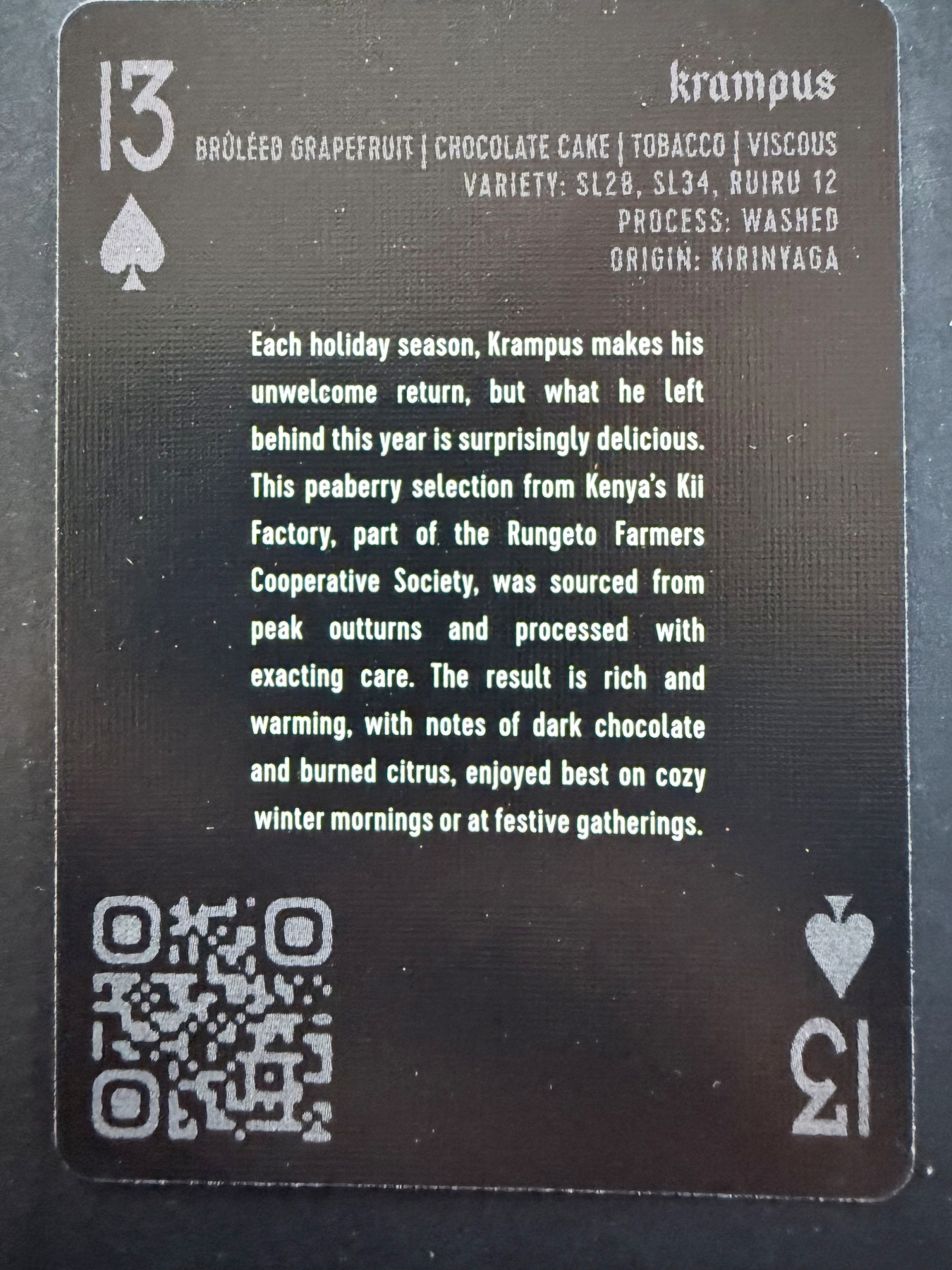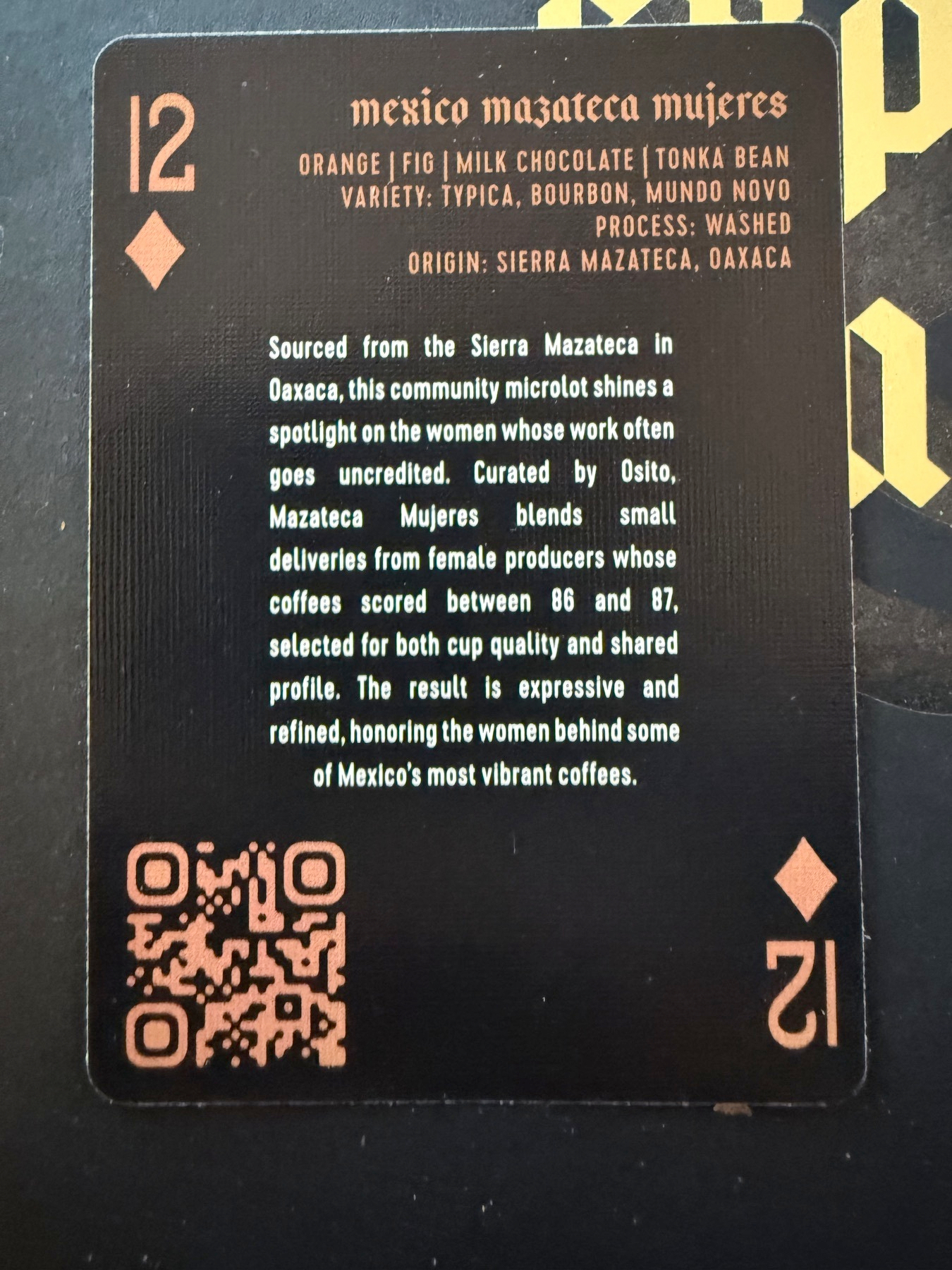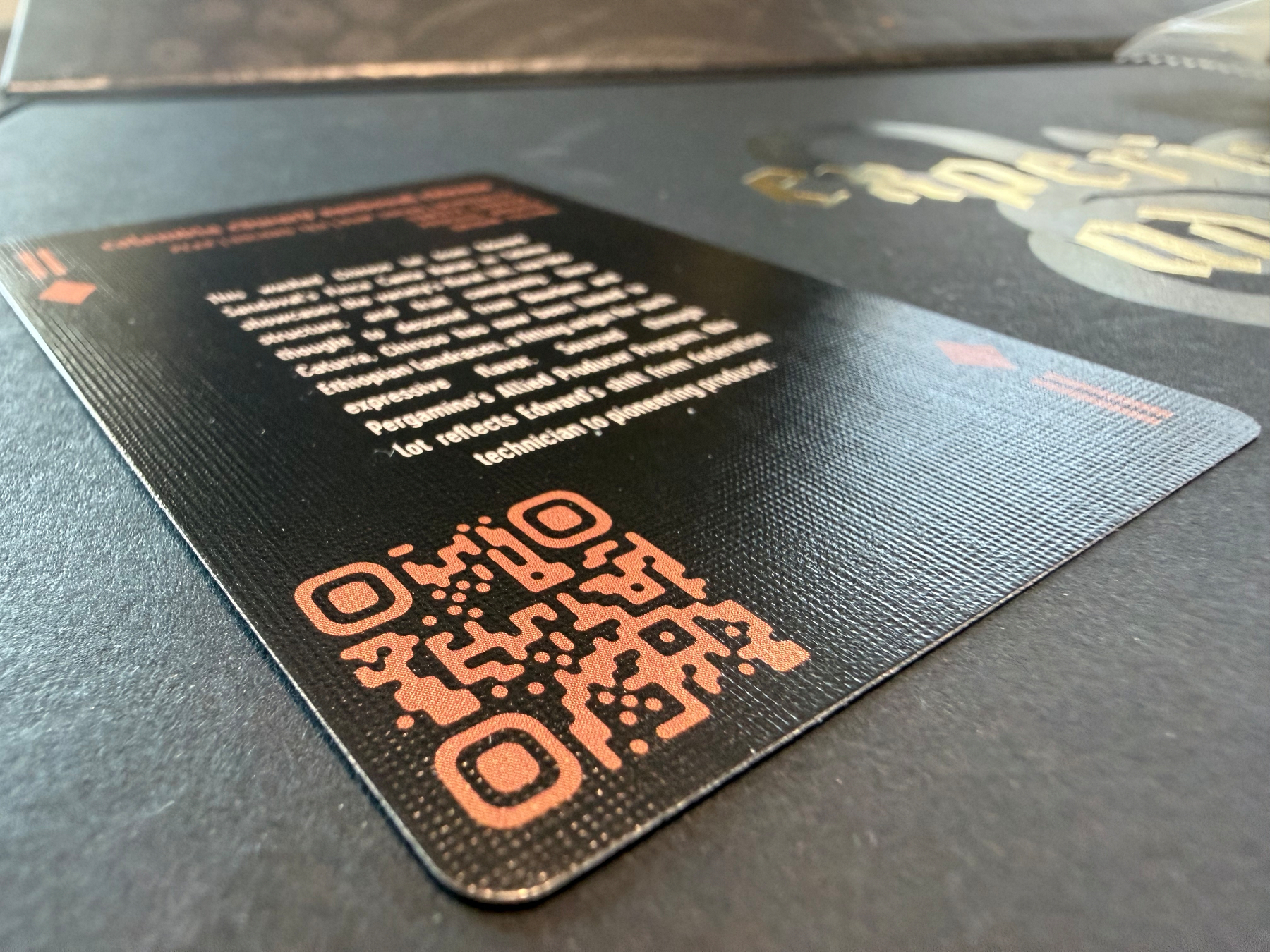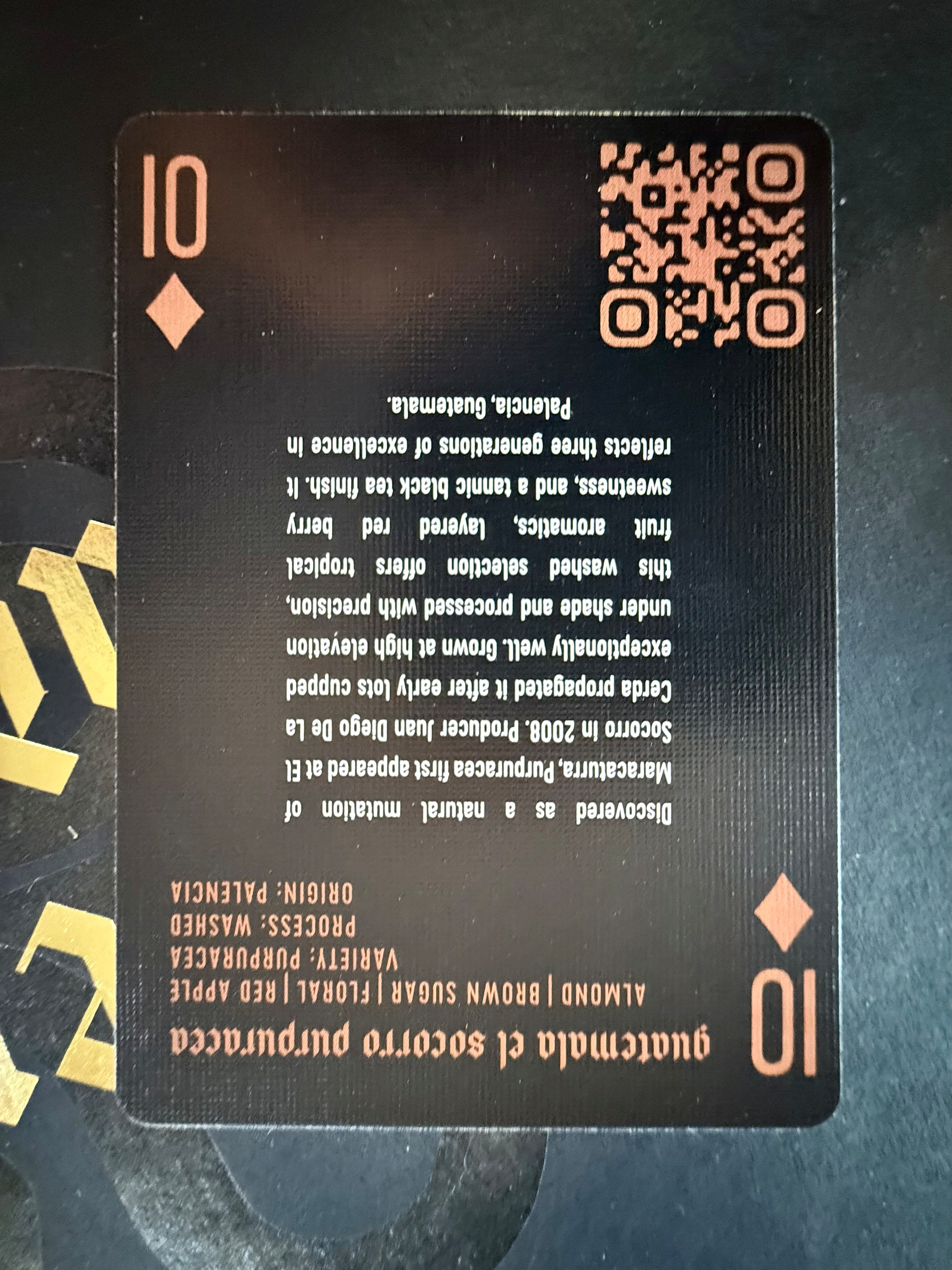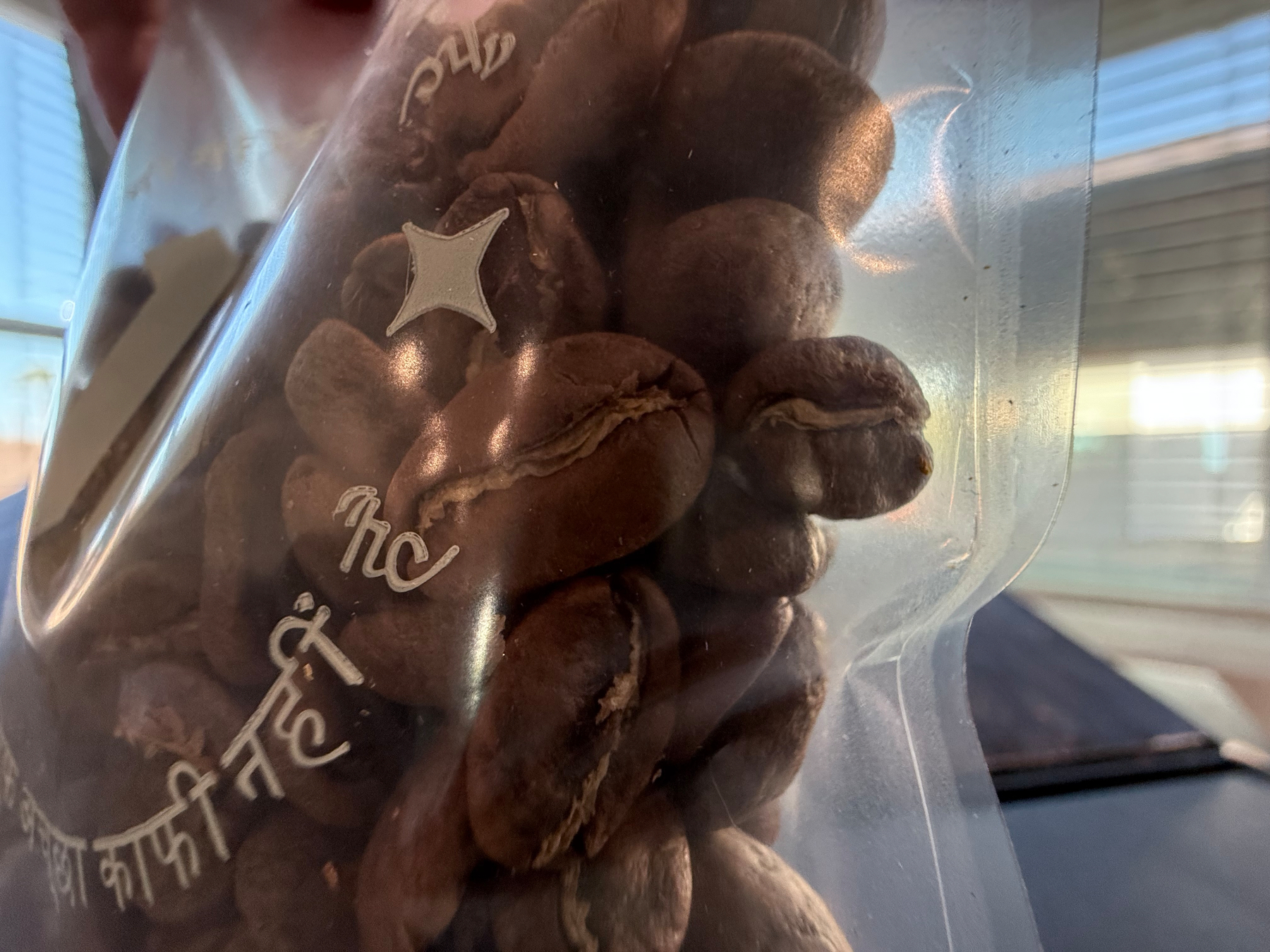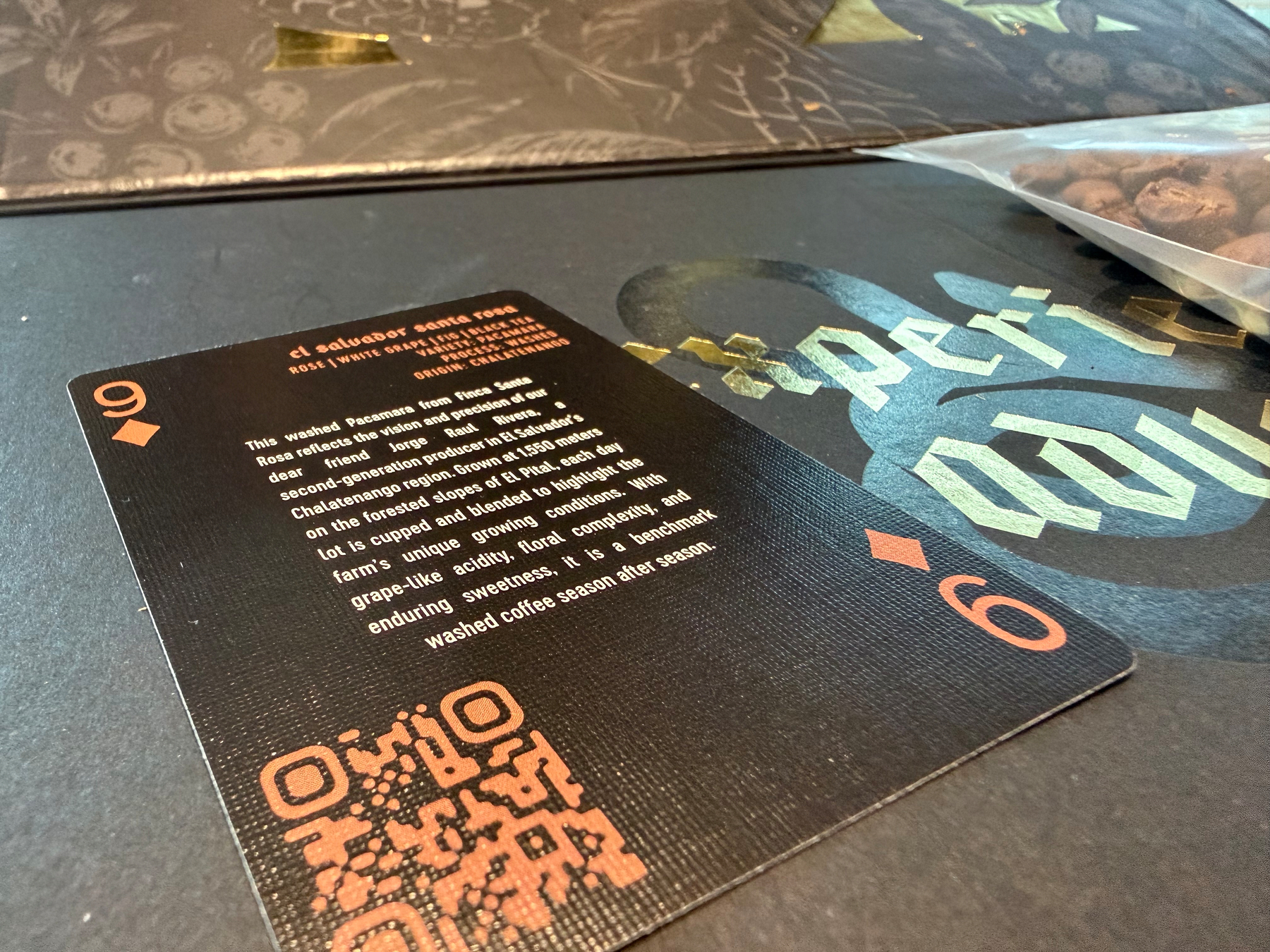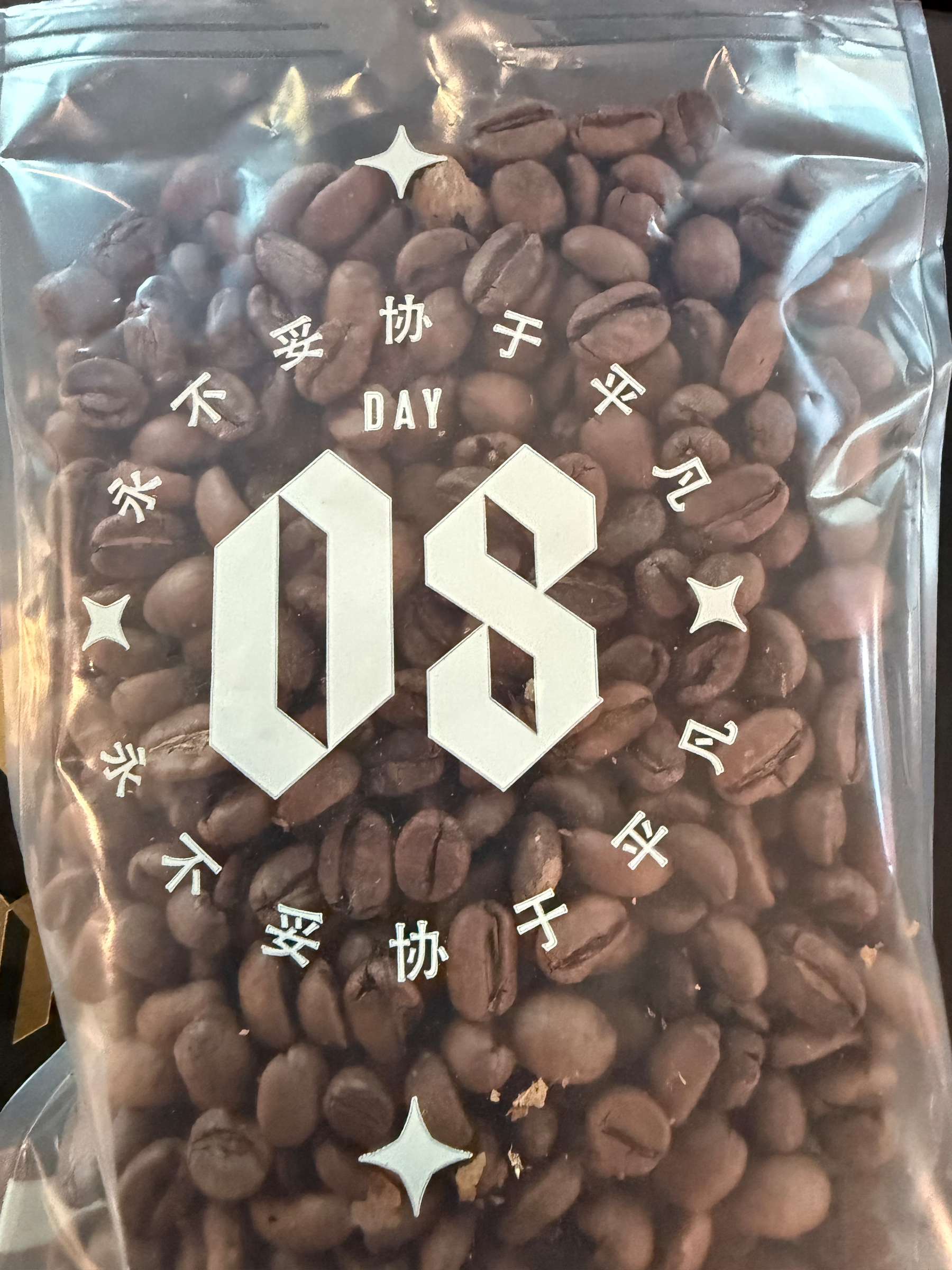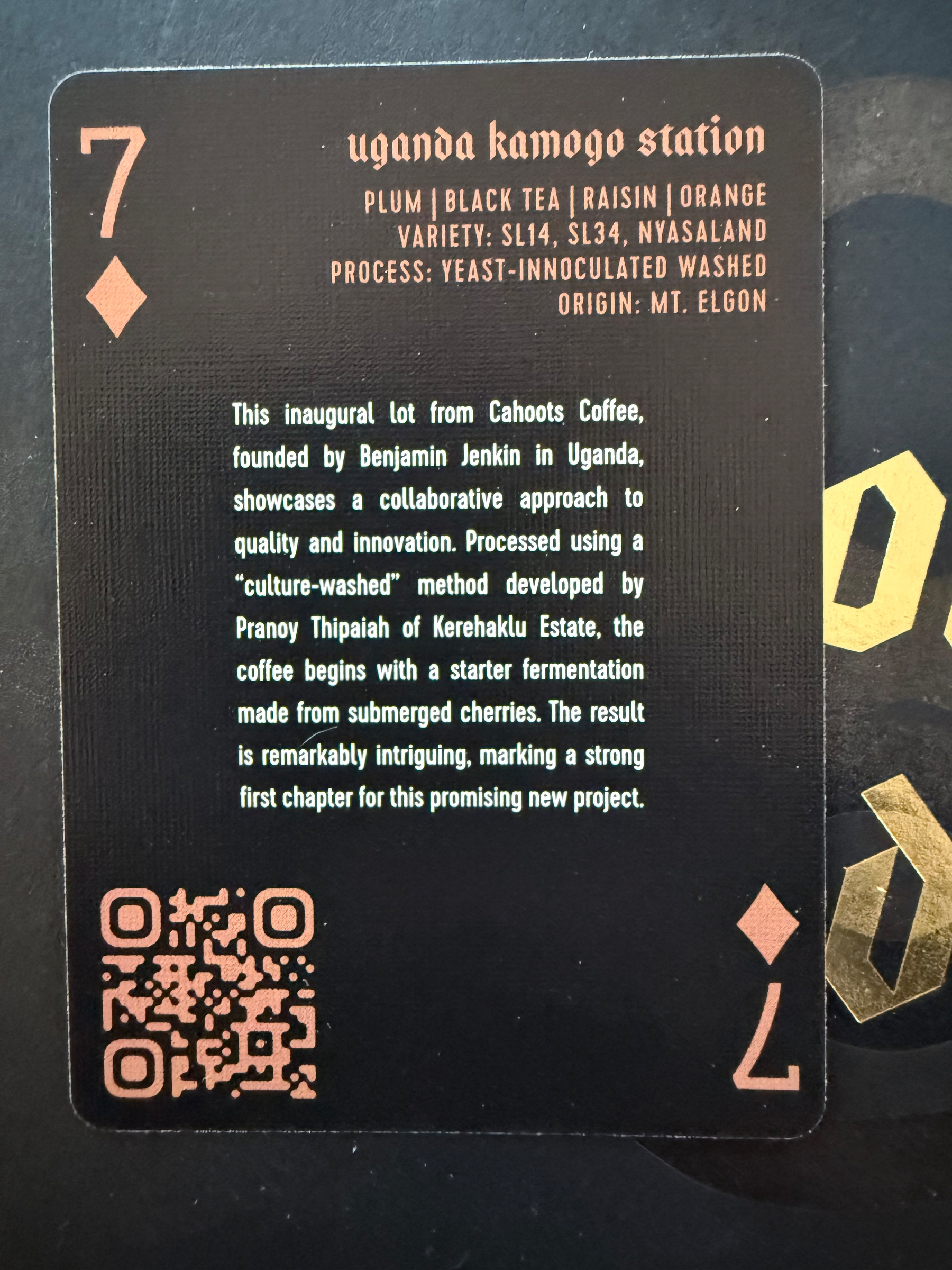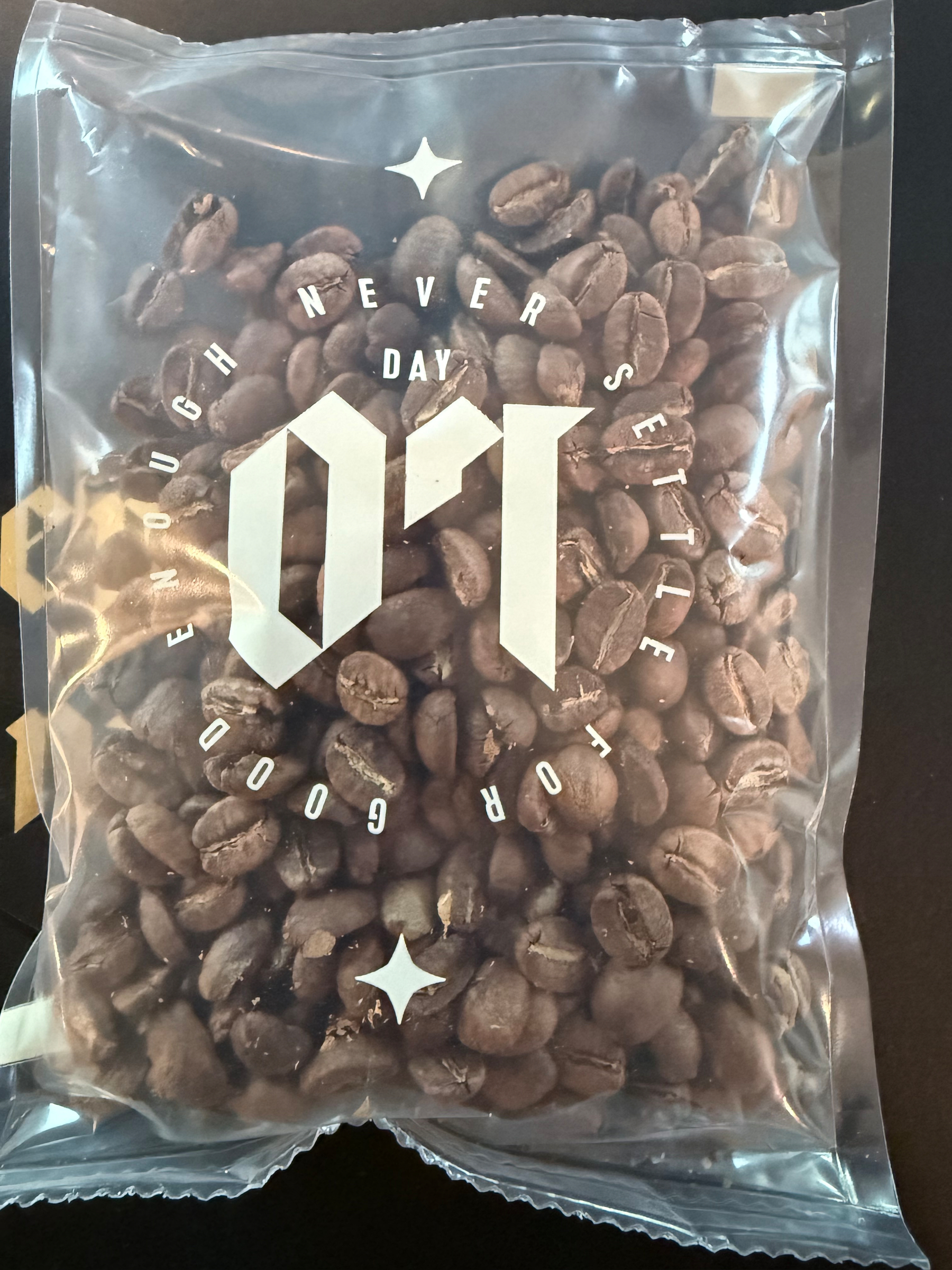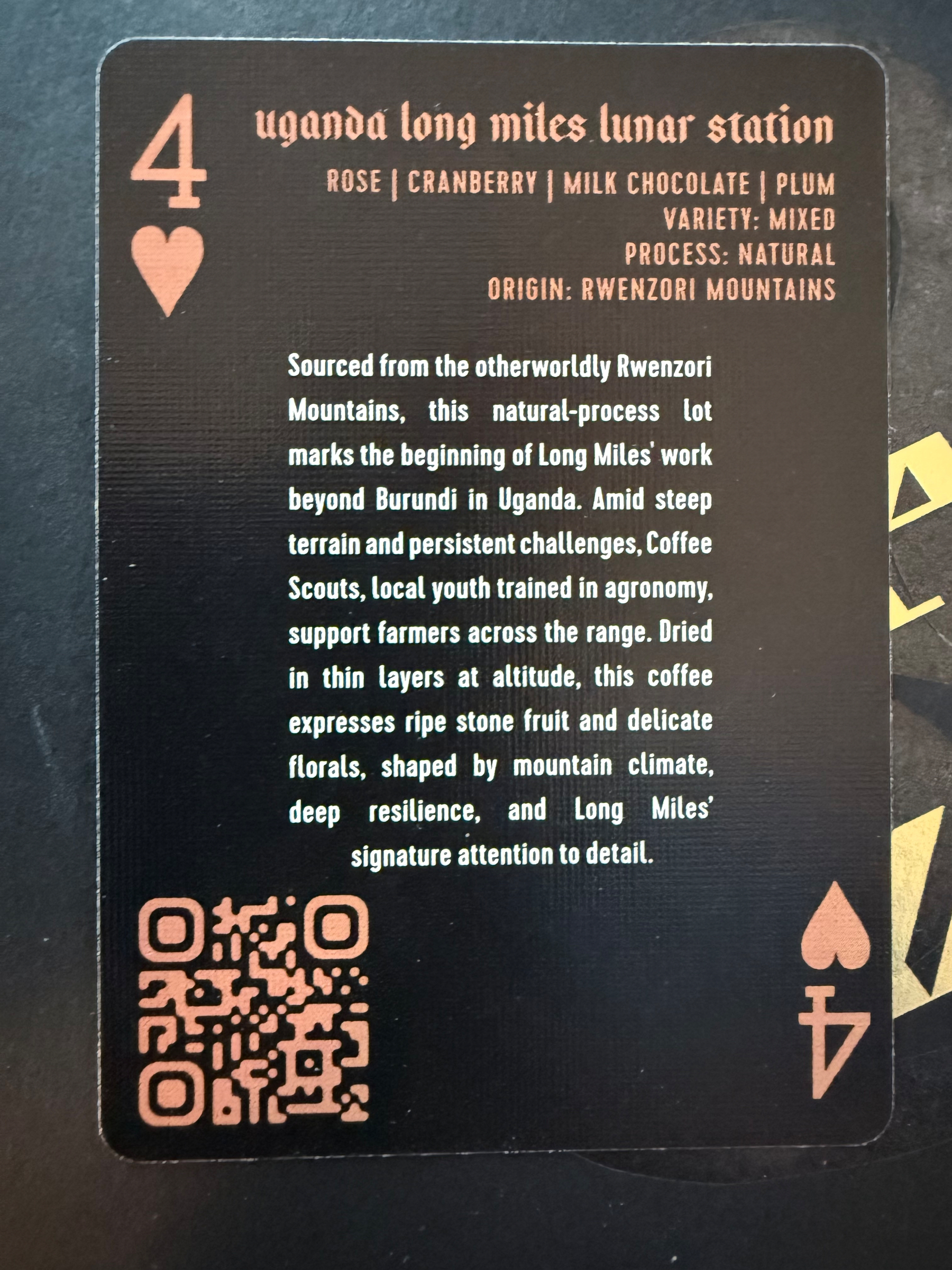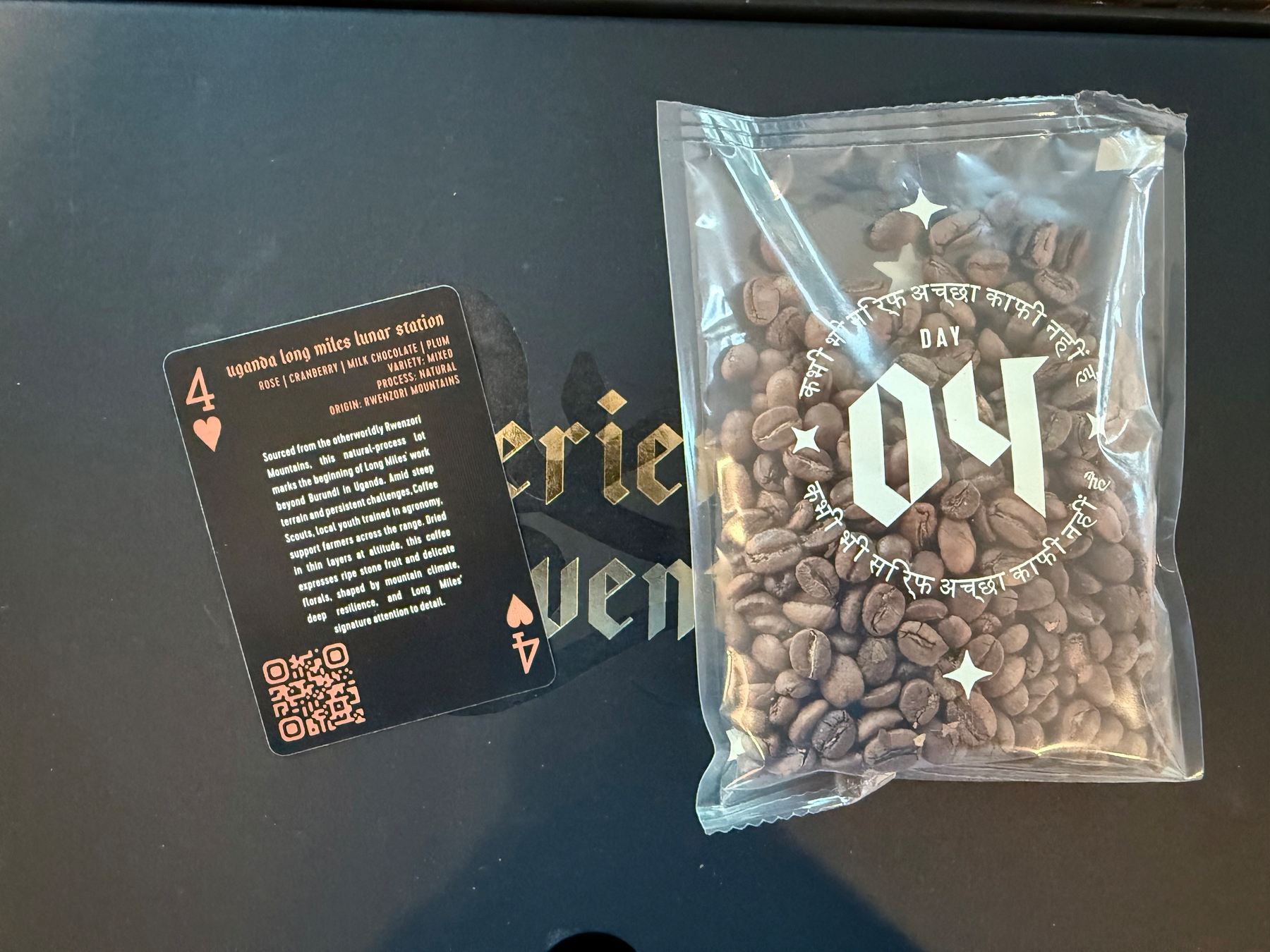Origin: Kenya
Selection: Peaberry
Notes (card): Dark chocolate, burnt citrus
Vibe: Rich, warming, wintery
This one’s simply called Krampus, which feels right. Every holiday season he shows up uninvited, and somehow this year he brought coffee instead of chaos. This is a peaberry selection from a Kenyan factory, part of the Rutungo farmers group. It’s meant to be rich and warming, with dark chocolate and burnt citrus notes—best enjoyed on cozy winter mornings or at festive gatherings.
Right out of the bag, the aroma is unmistakably chocolate-forward. Fresh, cocoa-heavy, comforting. Something a little different from the usual rotation, and honestly a welcome shift.
Dialing It In
I started this one at -4, which was clearly too fine. The PSI shot straight up to 14 with nothing coming out. When that happens, I usually stop the brew as soon as I see the pressure spike, let it backflush, and then run it again without removing the portafilter. It’s kind of a pseudo pre-soak—lets the puck saturate a bit before pressure ramps back up.
Dialed it back. Still too much. Same issue. By the time the puck was fully saturated, I finally landed around 12 PSI, which felt right. Krampus was harder to dial in than most—true Grind Olympics material.
Iced First
Since it was late afternoon, I decided to save the hot shot for the next day and start with iced.
Over ice, it’s tart but pleasant. I don’t really get burnt citrus in a literal sense, but there’s something leafy and smoky happening—fig-like, with a roasted nut and dark chocolate backbone. There’s a sharpness up front, but it settles into something pretty satisfying.
Hot Shot (Next Day)
The next day, I came back for the hot shot.
Hot, it leans much more almond-roasty and smoky. There’s a definite oolong / hickory vibe—smoke-forward, layered, warming. Interestingly, the citrus that showed up iced doesn’t really come through hot. The espresso version is darker, rounder, and more savory.
Verdict
Krampus is good both ways, but for me:
- Better iced for brightness and contrast
- Hot is smoky, rich, and subtle, but loses some of the edge
Either way, it’s a solid, seasonal curveball—and very on brand for a coffee named Krampus.
